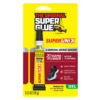Good, I'd just come up with an enticement for Rose. An aeroplane ride.
Now to work on Palumbo-- I shudder to think of what sort of Foxtrot I'd get being his bad side... :wink:
--Bill
Now to work on Palumbo-- I shudder to think of what sort of Foxtrot I'd get being his bad side... :wink:
--Bill






Comment